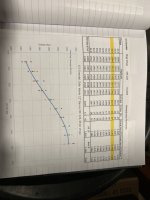I think you've got it for the most part.
So, yes. . . a tuner changes the barrel's frequency. Though the harmonics of a barrel is not simple as a simple single sine wave like in that pic, let's just KISS it.

In the end, it has to do with the alignment of the of barrel time and where in the harmonic that the bullet exits the muzzle. Change the frequency of the barrel for a fixed barrel time, you'll get a change in POI (as seen in that pic). Change the barrel time for a fixed frequency and again you'll get a shift in POI, since the muzzle will be pointing is a different direction when the bullet exits.
If one is able to load their cartridges to where they get very small variances in velocity, dispersion on a target will be very small and whether you're in a "node" or not doesn't effect the dispersion for a group, but will show up just like in that pic. If one's cartridges produce a large velocity dispersion, then that's what we're going to see on target due to when the bullet leaves the muzzle in the harmonic. Finding the right powder charge, which effects barrel time, that's consistently at the point in the harmonic that moves the least will show up with less dispersion than a barrel times that vary and exit at different times in the harmonic. Consistent barrel time that minimizes the effects of being at a different spot in the harmonic is really what we're trying to find when trying to find a load that produces consistent small groups (like we do is OCW testing).
Tuners, which changes barrel frequency, only play a small role is reducing dispersion. Like, it won't make .5 MOA groups .2 MOA. . . especially if the cartridges produced can't have very consistent ignition and little velocity dispersion. The changes are so small, you've got to shoot really small to see it. Though POI is easy to see (e.g. my pic above). This is why, during OCW testing, I find comparing POI's relative positions along with shape and size of a small groups helps me determine which load tends to be the most consistent.
It's always a big challenge to keep everything consistent.


Once I find a load and tuner setting that work well together, I'll simply use the tuner to make adjustments to POI when I see it's being effected by atmospherics and/or barrel heat.



